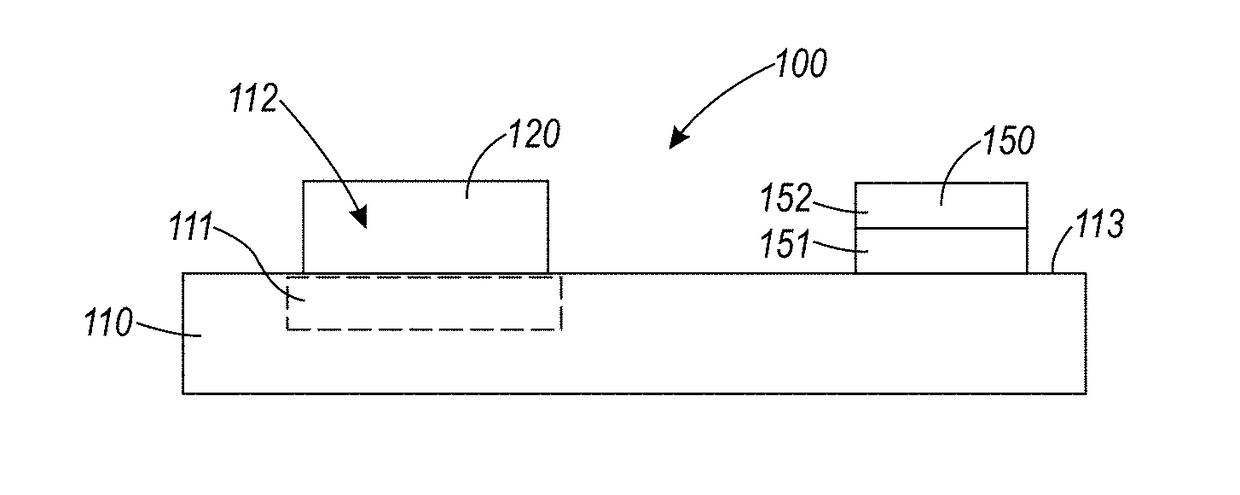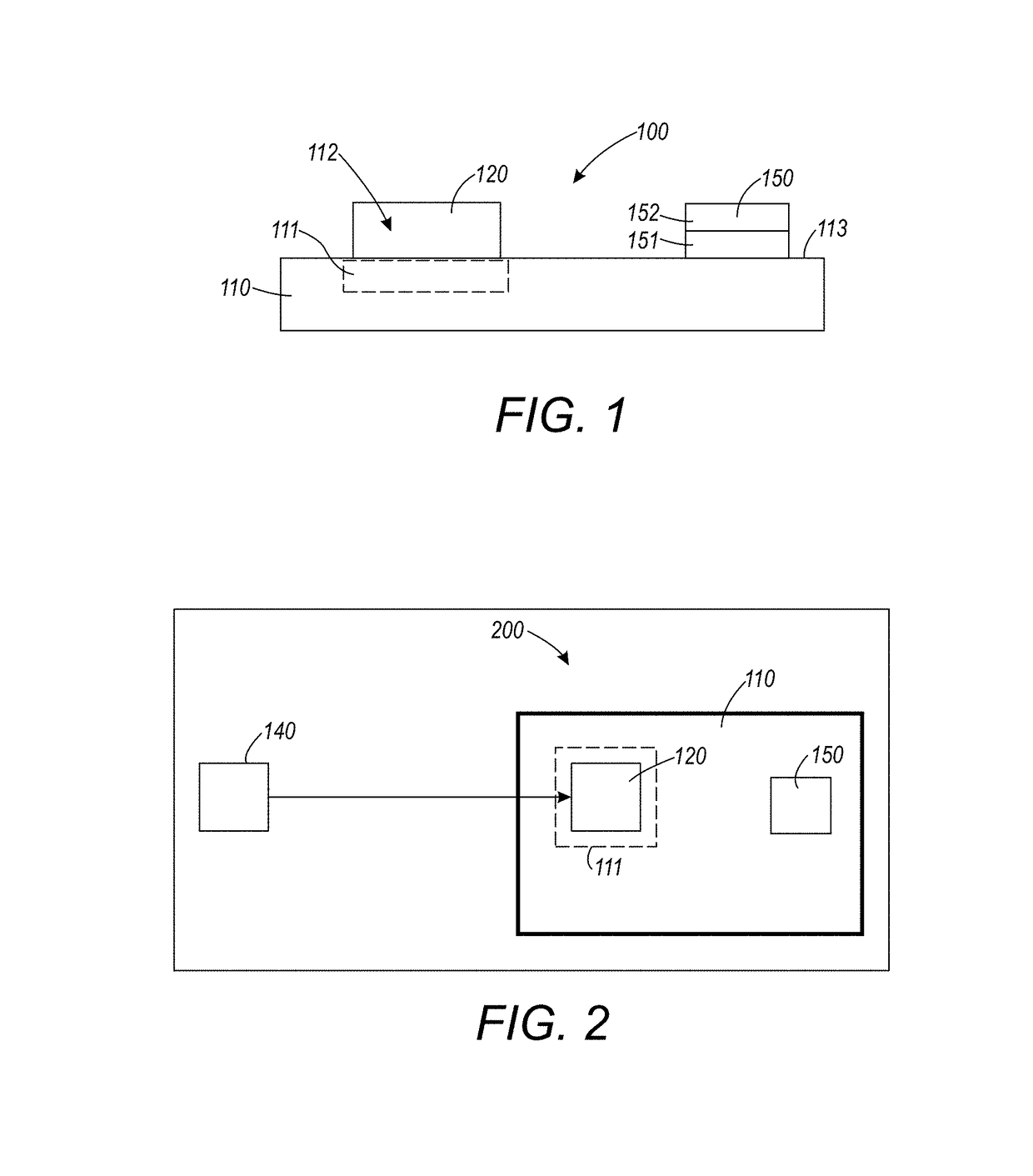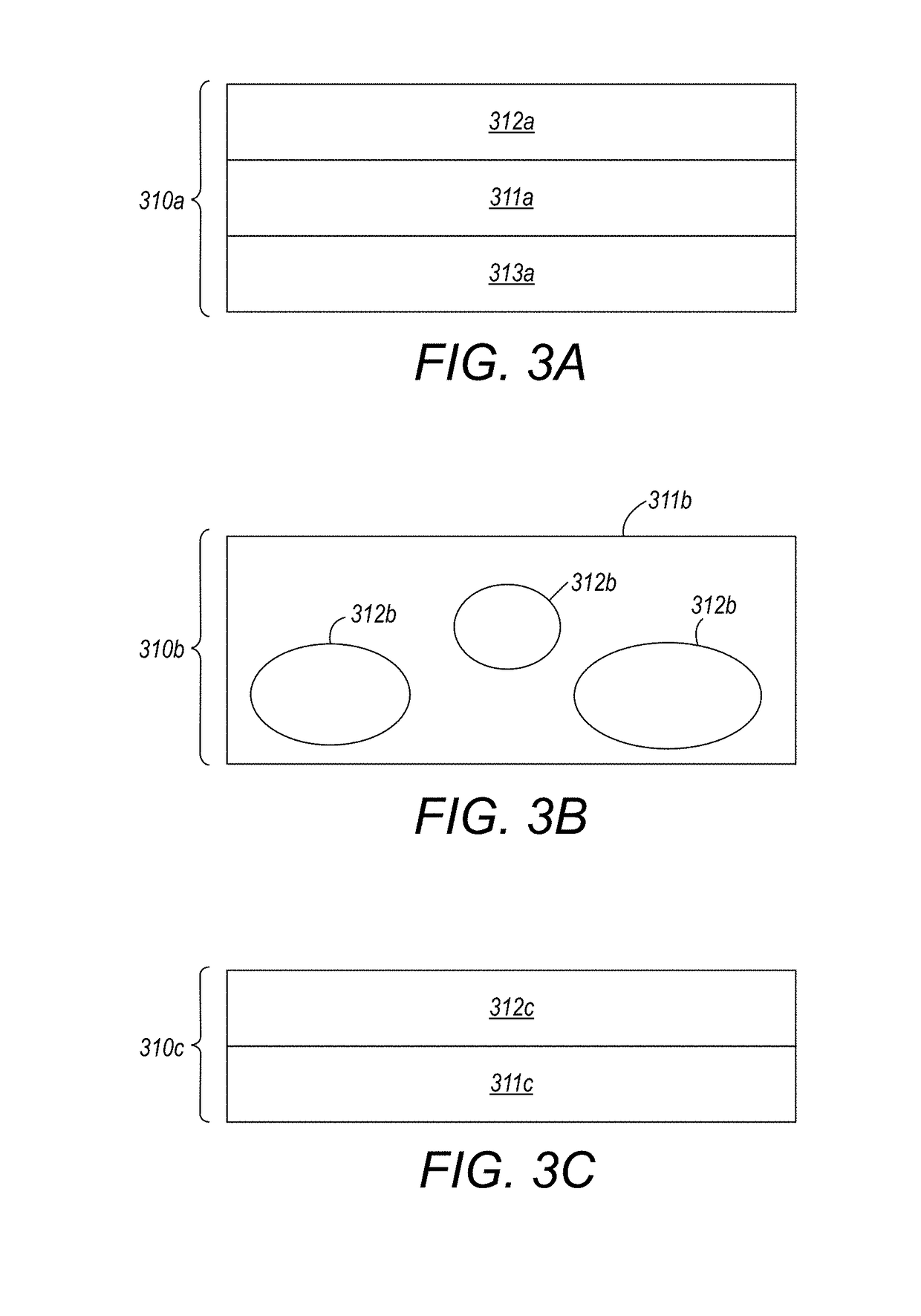Pre-conditioned self-destructing substrate
a self-destructing substrate and pre-conditioning technology, applied in the direction of circuit security details, electronic switching, pulse technique, etc., can solve the problem of self-destructing of the frangible substra
- Summary
- Abstract
- Description
- Claims
- Application Information
AI Technical Summary
Benefits of technology
Problems solved by technology
Method used
Image
Examples
example 1
[0076]In a first example, an integrated thin film resistive heater was used to pre-weaken and to initiate the break-up of a frangible glass substrate. FIG. 17 shows the example device 1700 comprising a frangible substrate 1710 and two integrated heaters 1721, 1722 disposed at opposite ends of the substrate 1710. In this example, the heaters are 3.6 μm-thick Mg thin films deposited by sputtering and patterned to form rectangular strips with bow tie-shaped electrodes. When current is applied across electrodes 1723, 1725 and electrodes 1724, 1726, intense heat is generated at the narrow stripe sections 1727, 1728 of the thin film heaters 1721, 1722. The heat damages the underlying frangible glass substrate 1710 initiating a fracture point that causes the entire frangible glass substrate 1710 to self-destruct along with heaters 1721, 1722.
[0077]Pre-weakening the substrate can reduce the amount of electrical power and energy needed to initiate self-destruction of the substrate 1710. A fr...
example 2
[0080]In this example, the device comprised 3 mm long×1 mm wide heaters. Such larger heaters can be used for fracturing thicker frangible glass because thicker glass requires the higher energies that only larger heaters can deliver. For this larger heater, a pre-conditioning pulse current of 4.7 amps, applied twice for durations of 1 sec. per pulse. Once activated with the double pulse impulse, the energy needed to fracture the glass was 5.8 Joules. The corresponding time for the heater to fuse was 0.59 sec, and the time for the glass to fracture was 1.41 sec.
[0081]Without the pre-conditioning treatment, applying an identical electrical stimulus did not cause the heater to fuse or the glass to fracture even when held for over 1 sec. The energy needed to initiate fracture was over 9.8 Joules, so the pulse treatment reduced the required energy by over 40% in this example.
PUM
 Login to View More
Login to View More Abstract
Description
Claims
Application Information
 Login to View More
Login to View More - R&D
- Intellectual Property
- Life Sciences
- Materials
- Tech Scout
- Unparalleled Data Quality
- Higher Quality Content
- 60% Fewer Hallucinations
Browse by: Latest US Patents, China's latest patents, Technical Efficacy Thesaurus, Application Domain, Technology Topic, Popular Technical Reports.
© 2025 PatSnap. All rights reserved.Legal|Privacy policy|Modern Slavery Act Transparency Statement|Sitemap|About US| Contact US: help@patsnap.com



